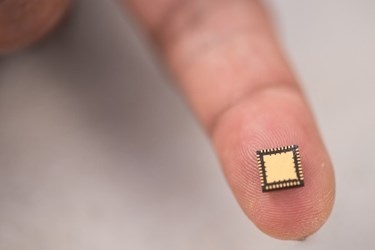Self-Powered Sensors That Communicate Could Warn Of Bridge,
Source: Michigan State University
 Imagine a bridge or a dam that could sense a structural defect before it happens, diagnose what the problem will be and alert the authorities before something bad happens.
Imagine a bridge or a dam that could sense a structural defect before it happens, diagnose what the problem will be and alert the authorities before something bad happens.
Three Michigan State University College of Engineering researchers are developing a new technology known as substrate computing. This will allow sensing, communication and diagnostic computing, all within the substrate �C the building material �C of a structure, using energy harvested from the structure itself.
The research is funded by the National Science Foundation, including a recent $1 million grant.
Subir Biswas, professor of electrical and computer engineering, said the goal is to install sensors that continuously monitor and report on the structure's integrity, using new sensor-network technology.
“Adoption of such monitoring has previously been limited because of the frequency of battery replacement for battery-powered sensors,” he said, “as well as the need for a separate communication subsystem usually involving radio frequency sensor networks.”
A research team of Biswas; Rigoberto Burgueno, professor of civil and environmental engineering; and Shantanu Chakrabartty, professor of computer science and engineering from Washington University at St. Louis, are developing this new technology.
“Our research is in the area of smart modular substrates with embedded sensing, communication and computing, that use advancements in mechanical energy harvesting and ultrasound communications to make it a reality,” Biswas said.
In the future, this technology will be routinely used in building materials, so that structures such as bridges and buildings will be able to detect and diagnose potential problems without the need for an external energy source and a separate wireless sensor network. The goal is to integrate all these functions within a tiny 3 millimeters-by-3 millimeters electronic chip, which can be embedded within the material of a structure.
“These electronic chips, with MSU-patented technology, will be capable of detecting the nature of a fault, send the fault information through the structure material itself and compute the fault pattern across the entire structure,” Biswas said.
The technology is expected to be commercially available in five years.
| }
|